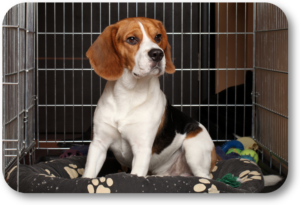I was at a new Home Dog Training client last Monday in Kennesaw working with him and his thirteen-month-old Pointer named Remington. Remington was a pretty good dog for the most part. His biggest problem was that he just didn’t want to listen to my client. This is common in many dogs when they have been coddled a little too much when they were puppies. Since Remington was only “just out of puppydom”, this was probably the cause of his misbehavior.

The biggest thing that I needed to accomplish was to have my client accept that his “babying” Remington was the majority of his issues and that most of the training would focus on educating him how to appropriately interact with Remington going forward. He was up to the challenge, and we had an excellent training session. He knew what to do and Remington was now listening to him and obeying his commands.
Everyone was happy. As I was finishing up the lesson, my client remembered that there was one more thing he needed to understand. He told me that it was always a challenge to get Remington into his crate. Did I have any ideas on how to make it a simple process?
Robin and I always advocate the use of dog crates. Over the years we have heard many people equate crates to jails. This is because we place “human preconceptions and emotions” to crates. We see them as areas of confinement with bars.
Our human experience naturally compares this description to a jail and a jail is a bad place that you only go when you have done something wrong and are about to be punished. Our dogs are not human. They have never watched The Bird Man of Alcatraz or The Long Green Mile.
Our dogs are always focused on safety. From our dogs’ perspective, the last and strongest bastion of safety is their den. Their den is an enclosed area, sometimes physical and sometimes virtual, where they can retreat and always remain safe and secure. Guess what? Your dog’s crate is secure and is an enclosed area.
In reality, your dog naturally wants to gravitate towards the crate as their safe place. Our dogs should love their crates because nothing bad ever happens to them in their crates and we ensure that they are safe havens for them.
So, the good news is that your dog can be naturally drawn to the crate as a safe and happy place. It is now up to you to assure that the crate is that wonderful place. It is critical that you understand the appropriate way to introduce your dog to their crate. Doing this incorrectly could lead to a lifetime of inappropriate behavior.
- First, it is important to create a positive, pleasant association with your dog’s crate so that he will enjoy spending time there.
- Place a worn t-shirt or other piece of clothing or bedding in the crate. The “this is part of us” smell will help create a comforting and inviting environment for your dog.
- If it is too bright or loud where you have the crate, create a comforting environment by covering three sides of the crate with a blanket or quilt.
- Encourage your dog to explore the crate by placing toys, treats, food, and water inside.
- Lavish your dog with praise when he enters the crate on his own.
- Initially leave the door open whenever your dog goes inside the crate. After a while, start closing the door when he is occupied or napping.
- Do not remove your dog from crate if whines. Wait until he is quiet. You want to make sure that you do everything on your terms. The one exception to this is if he has to potty. In that case, let him out now!
Remember to keep it slow to give him time to associate the crate as his happy place. That is the key to success.
Please call Robin or me at (770) 718-7704 if you need any dog training help. We are blessed to have been your local dog training professionals for over sixteen years. We have trained over 5,000 great dogs and loving families and are ready to help you.

Follow Us!